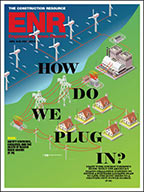Factors for Success
While Congress offers the carrot of the PTC, MISO's plan relies on the stick of the state RPS to "create a high-value transmission portfolio, enabling MISO states to meet their near-term RPS mandates," says the 2012 MISO study that recommends the program. "The recommended MVP portfolio will enable the delivery of the renewable energy required by public policy mandates in a manner more reliable and economic than it would be without the associated transmission upgrades," the report concludes. Significantly, no MVP is recommended for Kentucky, a MISO state without an RPS.
Recently, the supply of labor and materials has become another important factor, says Black & Veatch's Uhlmansiek. Lead time for turbine delivery used to be two and a half years, which has shrunk to 12 months, he says. Five years ago, a capacity factor of 20% was considered good; that's now in the 50% range, he says. The cost of turbines also is declining as manufacturers refine processes and construction costs per MW drop because there is a large pool of experienced labor.
The commercial market now boasts 150-meter-tall towers with integration-friendly converters and rotors sporting 100-m-long carbon-fiber blades, says Luis Cerezo, technical executive for renewable energy at the Electric Power Research Institute, Palo Alto, Calif. Within the next five years, he expects to see hydraulic drives for wind turbines that will allow the generator to be placed at the tower's foot, which will reduce the nacelle's weight and allow for taller towers.
Though MidAmerican's turbine order has set a world record, it's not likely to stand for long with the wind industry's growth. For example, wind now constitutes 28% of Denmark's installed generation capacity, and, on a low-demand Sunday last year, that was enough to meet 100% of the country's power needs.




